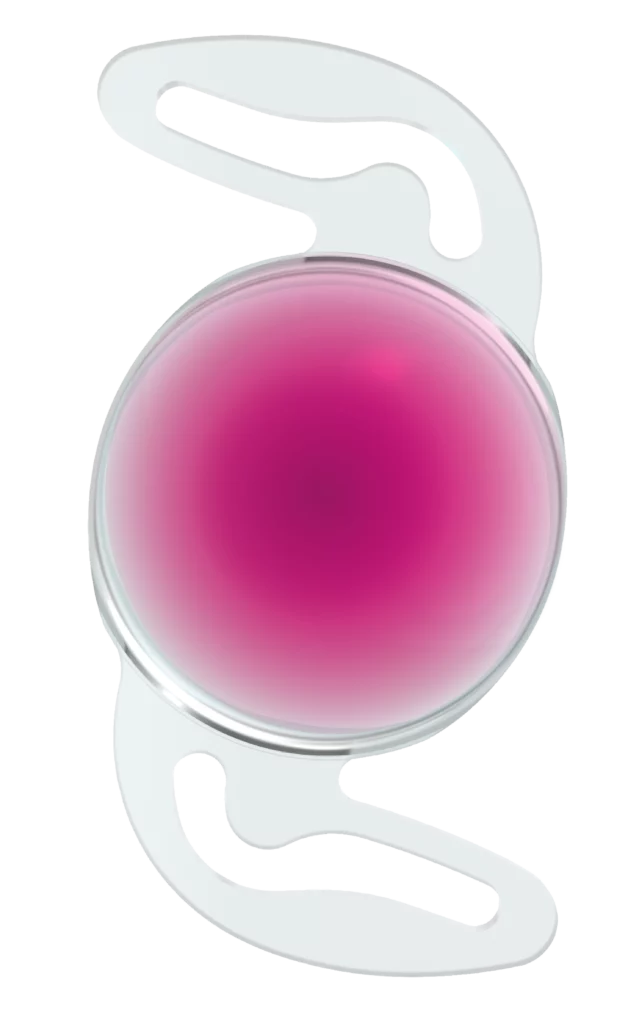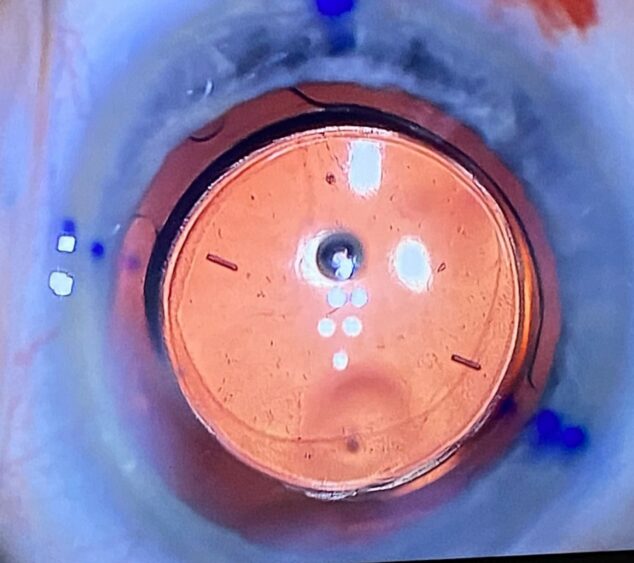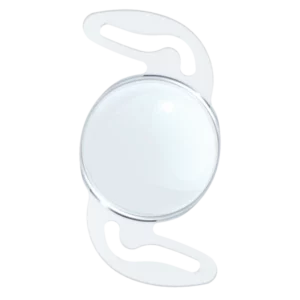An enhanced monofocal IOL delivering up to 1.5 D of high quality vision.
Centre region
Induced positive spherical aberration


Blended edge region
Reduced longitudinal spherical aberration designed to maintain visual acuity and constrast sensitivity under mesopic conditions.

Since the launch of RayOne EMV in 2020, clinical data has demonstrated that RayOne EMV provides high quality vision.1,2,3,6,7
The following clinical results are from patients in the UK, Spain and Portugal during the months leading up to the commercial launch of RayOne EMV.2
The patented RayOne EMV optic maintains monofocal-quality distance vision
RayOne EMV uniquely redirects light BOTH myopically to extend depth of focus for excellent intermediate vision AND hyperopically for a wider landing zone
This unique hyperopic extended depth design also provides enhanced blended binocular vision when used in a monovision configuration
Proven rotational stability and centration8 with predictable, sustainable and accurate visual results

Comparative outcomes with RayOne EMV
At the Hospital da Luz Lisboa in Lisbon, Professor Filomena Ribeiro and Professor Tiago Ferreira led a 150 patient double-arm, non-randomised prospective case series where RayOne EMV demonstrated excellent visual outcomes for distance and intermediate vision, and good visual acuity for near vision.1
RayOne EMV versus TECNIS Eyhance
At the Hospital San Rafael in Madrid, 22 eyes of 11 patients were implanted with RayOne EMV and 70 eyes of 35 patients implanted with TECNIS Eyhance (Johnson & Johnson Vision). Bilateral emmetropia was targeted for all patients. The defocus curve reports the binocular vision obtained using the best distance correction.6
Results from a multicentre evaluation involving 16 surgeons across eight countries and 56 patients (89 eyes) show that RayOne EMV Toric offers:

Rayner and RayOne are proprietary marks of Rayner. All other trademarks are property of their respective owners.
PRECAUTION: The safety and effectiveness of the RayOne EMV (RAO200E) has not been substantiated in clinical trials. The effects of the RayOne EMV IOL optical design on quality of vision, contrast sensitivity, and subjective visual disturbances (glare, halo, etc.) have not been evaluated clinically. Certain lab-based testing of the RayOne EMV IOL may aid surgeons in understanding the theoretical image quality expected with the RayOne EMV IOL compared to other Rayner FDA approved lenses, but such testing does not fully assess all aspects of clinical difficulties under all conditions. You must discuss with your surgeon the potential benefits of the modified optical design of the RayOne EMV IOL against the potential for risks associated with a degradation in vision quality and the lack of clinical data to characterize the impact of the RayOne EMV IOL optical design on contrast sensitivity and subjective visual disturbance. These considerations may be especially relevant to patients with certain preexisting ocular conditions (prior eye surgery, irregular corneal astigmatism, severe corneal dystrophy, macular disease, optic nerve atrophy, etc).